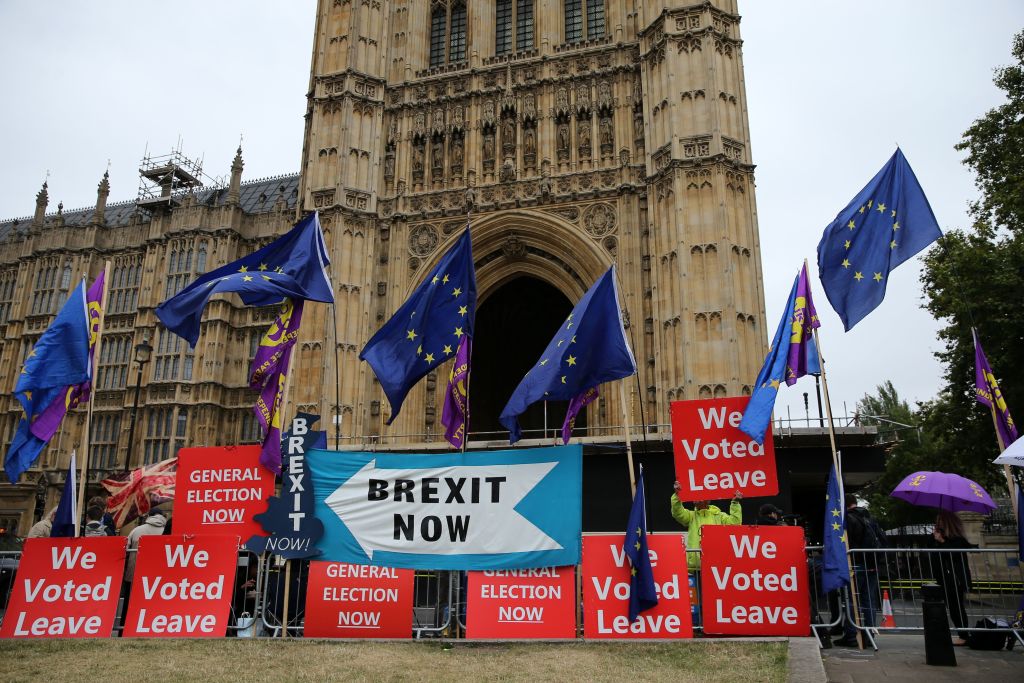A paralysed prime minister holed up in Downing Street, a deadlocked Parliament out of touch with public sentiment and political discourse descending into rancour and abuse. Millions of British people can be forgiven for looking at this situation with total despair. What caused this situation? An unreformed political system well past its sell by date combined with political parties which have lost their way. Can we do better? Of course. The solution lies in a ‘red & blue’ political reformation.
For many years, those holding a traditional, communitarian or patriotic outlook have been gradually marginalised. Parliament has become increasingly detached from mainstream viewpoints – no more so than over Brexit where this mis-alignment has produced stasis and political crisis.
Commonplace ideas about family, community and nation – widely held in Britain’s hinterland – are under-represented or absent among the professionalised political class as well as in our cultural, academic and business elites.
Instead we have liberalism in all things and in all places. Well over 400 UK Parliamentarians across the parties are liberals of various kinds. They are practically indistinguishable from each other. Labour and the Conservatives have together delivered over 30 years of ‘double liberalism’ made up of large doses of economic and social liberalism simultaneously. Liberal ‘over-reach’ has left large sections of the community disorientated, society less stable and individuals less secure. And the present political offer is bleak consisting, as it does, of a spiritually exhausted ‘Conservative’ party, a Marxist Labour party contaminated with anti-Semitism and toxic identity politics and a blatantly undemocratic and rather childish ‘liberal’ option.
The gatekeeper to this unholy mess is, of course, our unreformed two-party arrangement protected by a voting system which stifles and snuffs out political competition. The necessary correction involves voting and constitutional reform combined with a new post-liberal politics.
Voting reform is vital. The key feature of our First Past The Post (FPTP) electoral system is that it blocks new challengers from gaining meaningful representation at Westminster.
As a result, it protects the existing duopoly and renders both parties immune to popular sentiment on important matters such as immigration and indifferent to social issues such as the crisis in family life.
For years, parties which may have focussed on these issues have been deliberately locked out of politics. Popular movements such as Ukip have been denied effective representation. No one can argue that in 2015, Douglas Carswell MP – able and thoughtful though Douglas is – was a fair return for Ukip’s 3.9m votes, any more than one could argue that 23 MPs was a fair return for the SDP/Liberal Alliance’s 7.8m votes back in 1983.
There is no argument that our system is fair. Those defending the status quo suggest that FPTP leads to decisive electoral results and strong government. In reality, neither has been in evidence for many years. That defence is long gone.
Interestingly, the British public are ahead of those who govern us. Recent polling shows a fragmentation of party allegiances indicating a popular preference for a four or five party system – and yet we’re stuck with a structure suited to only two parties. To traditional conservatives who have long wished for a genuine conservative party to emerge, I’d suggest that voting reform is now the only realistic route to such a goal. British two-party politics is on its last legs. It has the smell of sediment about it – like something left behind after the tide has ebbed.
In addition to voting reform we need to re-think how we convene our politics. The old class-based divisions which gave rise to the Conservative and Labour parties – and gave them meaning – have given way to new value divides centred on culture.
The likes of David Goodhart and professor Matthew Goodwin have identified a ‘hidden gap’ in British politics which could, in theory, unite a majority of citizens. This red/blue type of politics combines social conservatism with moderate but genuine centre-left economics. It’s a platform which would blend some very dynamic policy combinations such as lower immigration linked with building new council housing – and arguably, if you don’t do one, the other doesn’t work. Railway Nationalisation could go alongside increased defence spending and leaving the EU with creation of a National Care Service.
Previous attempts to advance a red/blue type of politics have, understandably, focussed on influencing the establishment parties. Phillip Blond’s thoughtful ‘Red Tory’ ideas briefly influenced David Cameron, and Labour’s Ed Miliband temporarily flirted with Maurice Glasman’s admirable Blue Labour movement. Neither prevailed, perhaps because a policy blend of right and left is simply too subtle for Labour and Tory partisans to digest.
The Red Tory and Blue Labour movements were, effectively, at the back of the bus shouting directions to a driver who wasn’t listening and probably didn’t understand. The truth is that Labour and the Tories are stuck. Tories are as hooked on laissez-faire economics as Labour is on flakey progressive ideas. And critically the politics of individualism unites them both.
However, just when the outlook for communitarian politics seemed rather bleak something interesting has happened. In early 2018, the Social Democratic Party – a surviving group of grassroots ‘Owenites’ that many thought had long gone – began to revive. The SDP started to convene serious activists and thinkers who share a family-orientated, communitarian, nation-state outlook. A tipping point came in November 2018, when the SDP published its ‘New Declaration’ – a new manifesto which attracted former Ukip MEP Patrick O’Flynn to join. Membership has grown rapidly and now includes prominent journalists and former Labour party members Giles Fraser and The Spectator’s very own Rod Liddle.
For years, people have been offered a dreary choice between left or right. In fact, most voters want a dynamic combination. It’s time they were given that choice.
William Clouston is leader of the Social Democratic party






Comments